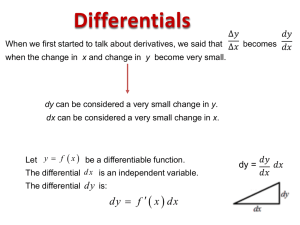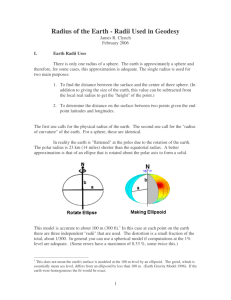An Introduction to Geodetic Datums
advertisement
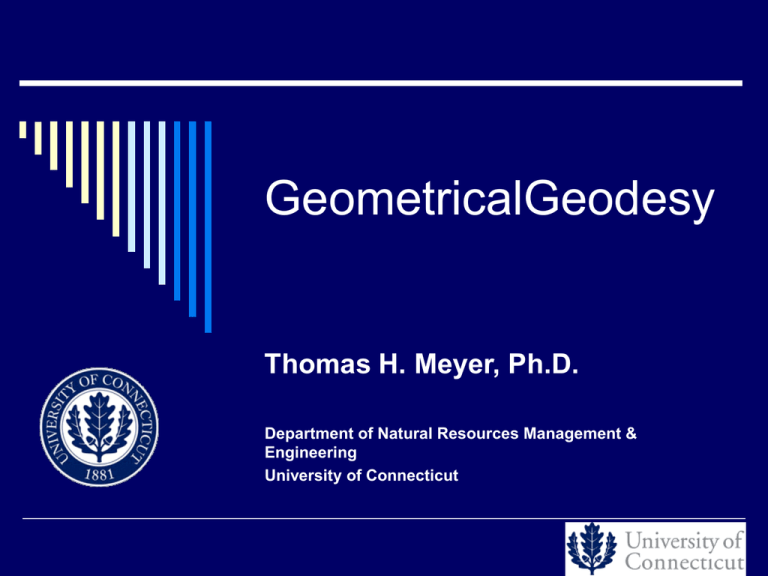
GeometricalGeodesy Thomas H. Meyer, Ph.D. Department of Natural Resources Management & Engineering University of Connecticut Surveying is… “Measuring distance, angles, heights, etc., to determine the relative locations of points on the Earth” -- NGS Glossary. what you do to make a map applied trigonometry Technology 1. Global Positioning System Technology 2. Optomechanical The job is to collect observations of features to be mapped and thereby determine their coordinates observations are things, such as angles and distances, a surveyor “observed” using an instrument maps are drawn using the coordinates of the features Surveying Observables zenith angle Surveying Observables, cont. bearings angles in the horizontal plane between features of interest slant distances Derived Quantities horizontal distance vertical distance bounds metes Suppose… you have a properly leveled instrument. you site an object in the distance… at a zenith angle of exactly 90 degrees. Is that object above, below or level to you? How do you know the Earth is round? The Flat-Earth Assumption causes objects to appear lower and farther away than they really are. c a so c / a cos a /(a h) so cos(c / a) a /(a h) a h a sec(c / a) h a sec(c / a) a sec x 1 x 2 5 x 4 / 24 O( x 6 ) so h a sec(c / a) a (c / a) 2 O(c / a) 4 Is this a practical problem? if a = 6378137 m then a one centimeter error occurs at c = 357.159 m Typical surveying accuracy for a 3500 m line is around one millimeter Ok, so far we’ve been using a coordinate system… it’s Cartesian In what reference frame does that coordinate system reside within? Geodesy “The science concerned with determining the size and shape of the Earth.” --NGS Glossary Why study geodesy? With inches to spare… going aground in the Panama Canal is bad… fender benders… Barge-Bridge Collision A horizontal geodetic datum.. is a system by which latitude and longitude coordinates are assigned to places of interest i.e., the foundation of spatial coordinates note bene: height is not included Surveying on the Sphere To construct and use geodetic datums we must be able to determine latitude and longitude coordinates from surveying observations. That requires spherical trigonometry Spherical Triangles Our fundamental figure Geodetic Coordinates Radii of Curvature in Geodesy radius of curvature in the meridian radius of curvature in the prime vertical radius of curvature in the normal section Radius of Curvature in the Meridian ( ) 2 a(1 e ) 2 1 e 2 d ( )d 1 sin 2 3/ 2 Radius of Curvature in the Prime Vertical Radius of Curvature in the Prime Vertical ( ) 2 1 e a 2 d ( ) d 1 sin 2 1/ 2 Normal Section Radius of Curvature in the Normal Section ( ) ( ) ( , ) 2 2 ( ) sin ( ) cos 2 d ( , )d 1 GeometricalGeodesy Thomas H. Meyer, Ph.D. Department of Natural Resources Management & Engineering University of Connecticut Thomas.meyer@uconn.edu
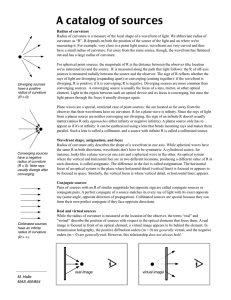



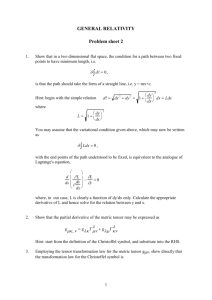
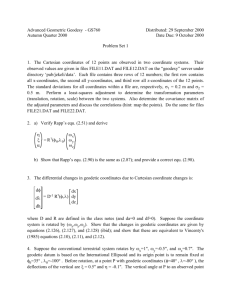

![Astronomic and Geodetic Surveying [Opens in New Window]](http://s3.studylib.net/store/data/006720332_1-995dd15e73ac73d62b2a2d2c1a39992f-300x300.png)

